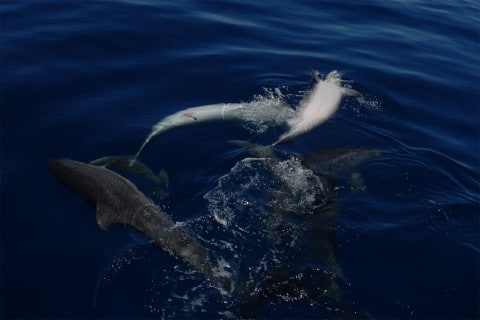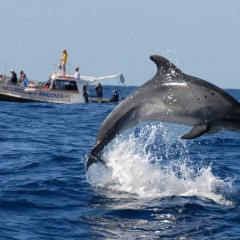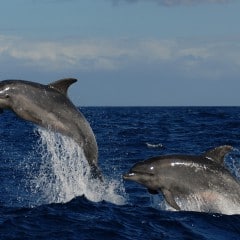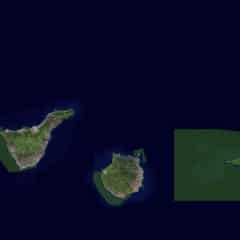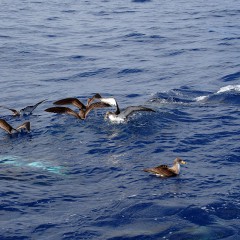Bottlenose dolphins are the largest dolphins found here. These potent hunters, often living close to the coast, can reach up to 3.5 m in length.
Overview:
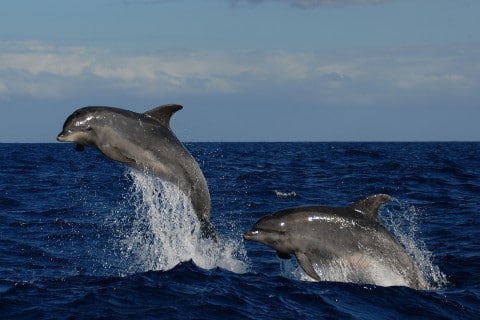
very often
near the coast
Groups: 10 – 15
size: 250 – 370 cm
weight: 150 – 650 kg
Prey: fish and squid
Colour: grey, belly white pink
pronounced melon, short snout
Bottlenose dolphins are massive and robust dolphins, known from dolphinariums and the “Flipper” series. Babies are usually born at the end of the summer after a gestation period of 10 – 12 months at about 120 cm, suckle for 1.5 to 2 years and reach sexual maturity at 10 – 13 (m) or 7 – 12 years (w) and 290 or 260 cm. They become 40 – 50 years old.
Distribution:

Stable groups of around 200 animals live in the southwest of Tenerife and Gran Canaria and frequent sightings are also common in the southwest of La Gomera and in the east of Lanzarote and Fuerteventura. Of 313 animals identified, 36 have been found on the islands of Tenerife, La Gomera, La Palma and El Hierro. The bottlenose dolphin, which is classified as vulnerable in the Spanish Habitats Directive’s List of Threatened Species, is included in List 2 of the Habitats Directive, which is why a number of protected areas have been established in the Canary Islands, each in the south-west of the islands.
Behaviour:
Bottlenose dolphins are less playful than other dolphins, but occasionally come close to the boat to play in the bow wave. Sometimes they can be seen performing acrobatic jumps. In most cases, near boats, normal behaviours such as “foraging”, “socialising” with other group members or “resting” are replaced by hesitant waiting or playful boat-related behaviours.
In the recording you will hear several specimens from a group of about 100 bottlenose dolphins about 2 miles off Valle Gran Rey. Three different types of sound can be clearly heard: Whistles, clicks and moaning sounds.
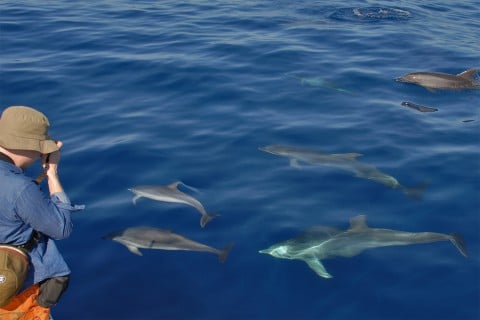
There is a marked rivalry between males of the same group and the dominant animals of different groups, which bite, ram and push each other under water. Aggressive behaviour has been observed towards spotted dolphins, which may be a food competitor. Bottlenose dolphins also show aggressive behaviour among pilot whales, which are quite capable of defending themselves. We have even observed them mating with pilot whales.
Alimentation:
They mainly eat fish and cephalopods. Bottlenose dolphins are known to adopt group-specific strategies for hunting. Sometimes they drive shoals of fish up from the depths to limit their escape and hunt close to the water surface. The specimen in the first picture took a small tuna fish with it when it jumped into the air and caught it when it dived in.
On the second picture you can see a porpoise “working” a fish at the fish farms on Tenerife. In other areas they hunt mullets on sandbanks, trapping shoals of fish with bubble nets or swirling mud or even using sponges as tools to avoid injury.


